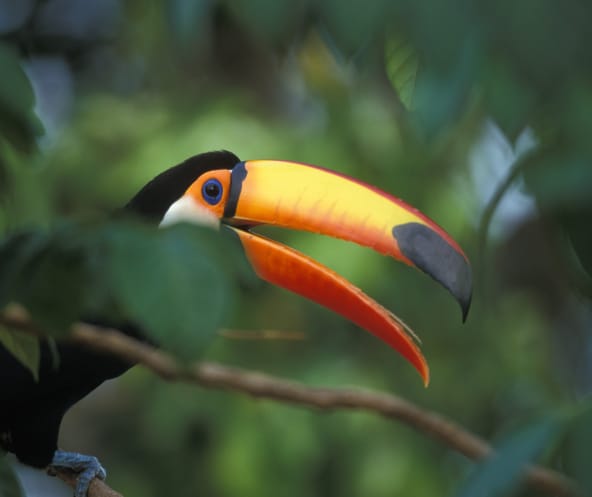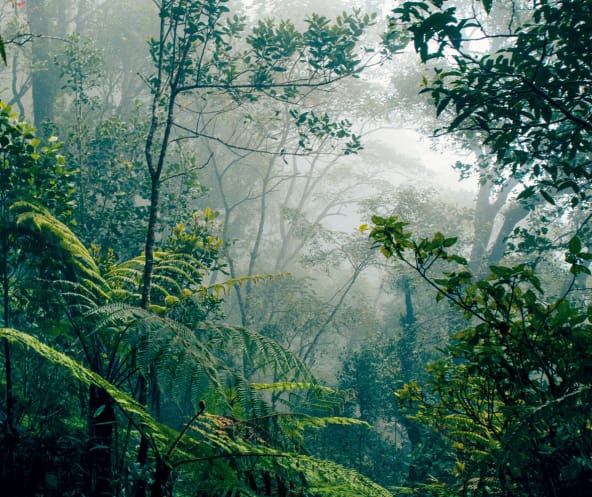
Tipping points – when ecosystems suddenly collapse
Higher greenhouse gases in the atmosphere do not have the same effects everywhere. Nor do changes always proceed at the same speed. Scientists speak of ‘tipping points’ in this context.
Higher greenhouse gases in the atmosphere do not have the same effects everywhere. While average temperatures are rising globally by 1.5 degrees, 2 degrees or more, some regions are becoming colder at times – witness the unusual arctic temperatures in Central Europe.
Nor do changes always proceed at the same speed. Some are gradual and take centuries to unfold, while others abruptly take on catastrophic proportions. Scientists speak of ‘tipping points’ in this context. So far, they have identified 18, divided into three groups: changes to ice sheets, in current systems and ecosystems.
Tipping point: Amazonia
One such tipping point is in Amazonia: Once humans have caused a certain level of rainforest destruction, the ecosystem will collapse inexorably and irretrievably. Then, in addition to the immense biodiversity, one of the planet’s most important climate stabilizers will be lost – one in which a quarter of the carbon exchange between the atmosphere and the world’s biosphere takes place.
The main reason for this lies in the functioning of the water cycle. The rainforest itself produces much of the rain it receives. Figuratively speaking, a drop of water evaporates five to six times on the way from the Atlantic to the Andes via the Amazon Basin. This cycle can be weakened decisively by the ongoing clearing of forests and the global warming that has already taken place. The evergreen rainforest would change to a seasonal forest or grassland adapted to drought.
Some studies suggest that Amazonia will tip once 20 to 25 percent of the forest has been destroyed. According to other research, this point of no return has already been passed. One sign of this is the occurrence of periods of drought. It is possible that Amazonia has already become a net emitter of greenhouse gases, especially methane and nitrogen oxides.
Considering cascading effects
Moreover, tipping points should not be viewed in isolation, but as a series of cascading effects:
A tipping of the West African monsoon could also prove devastating for Amazonia. A regional shift in precipitation patterns could result in the greening of the Sahara and, as a result, the fertilization of the rainforest by desert dust blown across the Atlantic would diminish.
Similarly, melting of the Greenland ice sheet could lower salinity in the Atlantic to such a degree that the Atlantic Meridional Overturning Circulation (AMOC) current system would weaken, leading to drier conditions many thousands of kilometers away in Amazonia.
Like the Amazon Basin, the Nordic coniferous forests are on the list of tipping points. These boreal forests, especially in Russia and Canada, account for almost one third of the world’s forest area. Their disappearance would accelerate catastrophic climate change considerably. Threats to these forests include logging and climate change effects such as drought, which in turn promote fire and pest infestation.
The authors of the Nature article “Climate tipping points – too risky to bet against” see the possibility of tipping cascades as a “planetary emergency” and an “existential threat to civilization”.

Rainforests are tightly intertwined with the climate: while forests are suffering from global warming, they are also the key to climate protection.

Rainforests are a vital component of local and global climate systems and play a key role in climate protection and in the fight against catastrophic climate change.

Climate change and extinction are existential crises that are tightly interwoven and reinforce each other. We must tackle them together.

Positive expressions related to sustainability and environmental protection often turn out to be empty words or the opposite of what they seem to describe.

The preservation of Earth’s forests is crucial climate protection: They store vast amounts of carbon and regulate the water cycle.